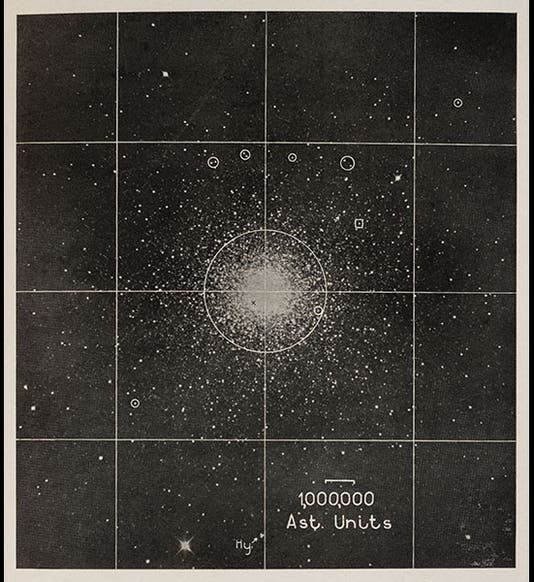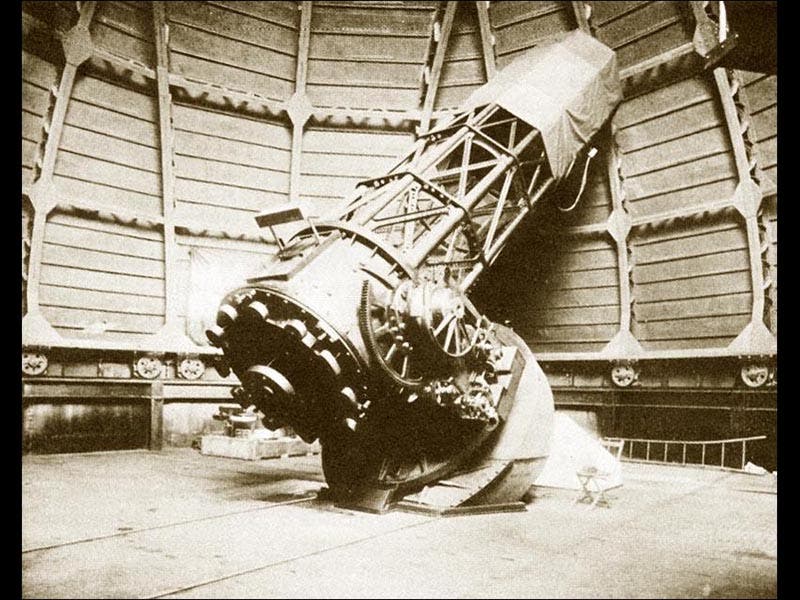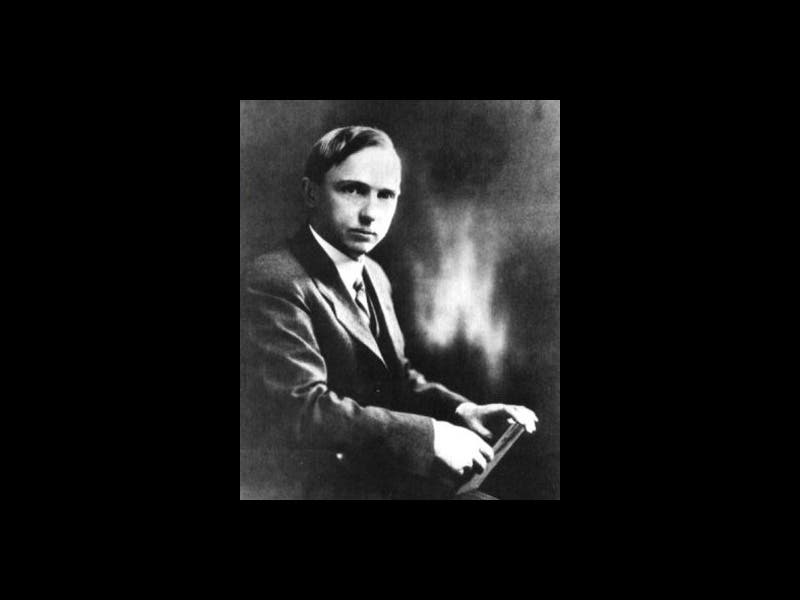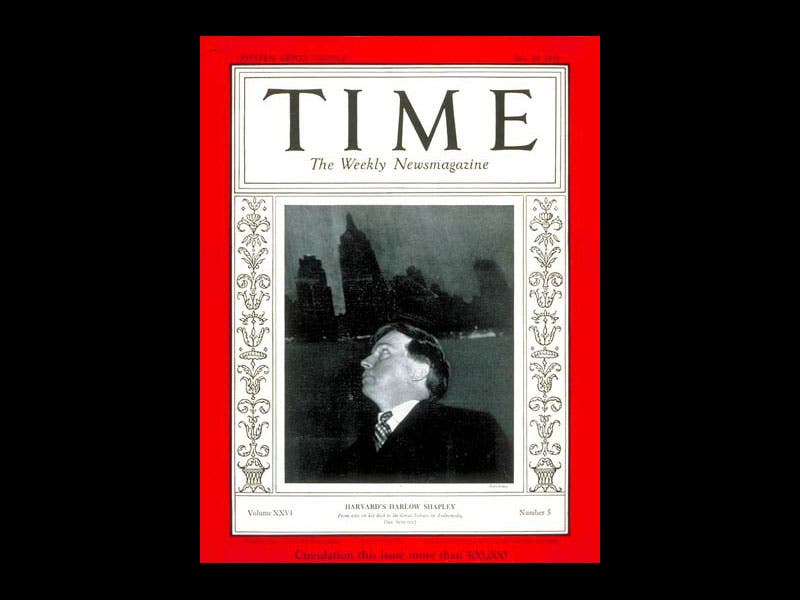Scientist of the Day - Harlow Shapley
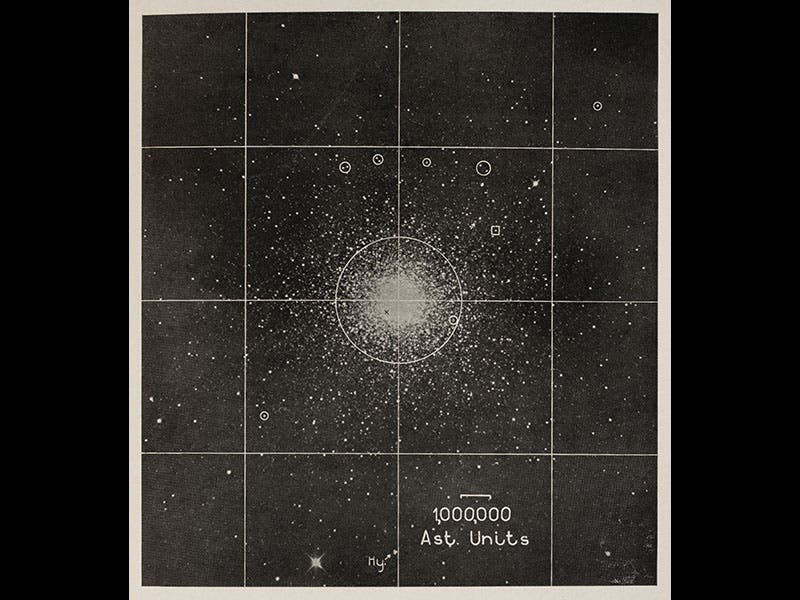
Mount Wilson Observatory

Lick Observatory
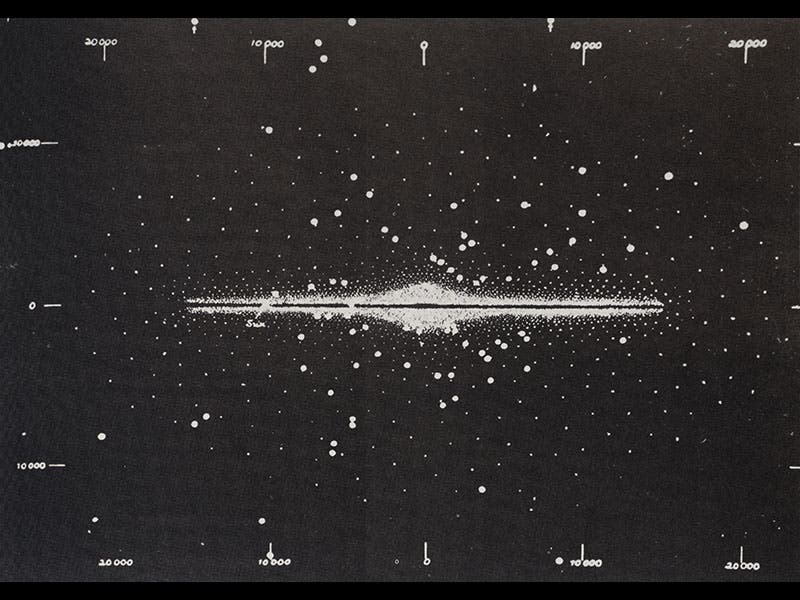
Linda Hall Library
Harlow Shapley, an American astronomer, was born Nov. 2, 1885. Shapley grew up not too far from here, in Nashville, Missouri, near Carthage, and attended college at another nearby spot, the University of Missouri at Columbia. But soon he departed for Princeton to do graduate work in astronomy. His dissertation examined a curious set of stellar objects known as globular clusters. These are spherical collections of thousands of stars, oddly located just north or south of the Milky Way, but only in one half of the sky. We see a photograph of one of these clusters, M3, above (first image). To solve the riddle of globular cluster distribution, Shapley needed the distance to at least some of these objects, but they were apparently very far away, so far that they exhibited no parallax whatsoever. At the time, measuring parallax (the sideways displacement of an object caused by the earth's annual motion around the sun) was the only means of determining the distance to stellar objects.
Fortunately for Shapley, in 1912, a woman working at Harvard College Observatory named Henrietta Swan Leavitt announced a discovery that would be the basis for a new astronomical yardstick. She discovered that certain variable stars known as Cepheid variables have a variation period that is proportional to their absolute brightness. This meant that one could determine the brightness of a Cepheid by simply measuring its period. Knowing the absolute brightness, and comparing it with the apparent brightness of the object when viewed from the earth, would allow one to calculate its distance.
Shapley, working with the 60" telescope at Mount Wilson Observatory in Pasadena (second image), took photographs of several globular clusters and was able to identify a number of Cepheids among the stars of the clusters (circled in white on the photograph of M3). This allowed him to determine the distance to the globulars, which turned out to average a staggering 30,000 light years from our solar system. Since it was thought at the time that our Milky Way galaxy was only about 10,000 light years across, this meant that the clusters, which, we remember, appeared in only one half of the sky, were clustered about an empty center far outside of our Galaxy. This asymmetry is best demonstrated in a graph (third image), where the Milky Way is the small hatched ellipsoid at left-center, the other two hatched areas at the bottom are the two Magellanic Clouds, and the globular clusters are the dots, clustered around nothing much at all at the right.
Shapley realized how to restore symmetry (and sense) to this picture--simply make the Milky Way 10 times larger (fourth image). Now the globulars would be clustered around the galactic center. The only disturbing aspect of this new picture is that the Sun has to stay where it is, which means the Sun is no longer at the center of the Galaxy, but about 2/3 the way out toward the rim. Once again, as with the proposal of the Copernican system in the 16th century, humankind has been bumped out of a presumed position of cosmic privilege.
Shapley announced his results in 1918. He went on to become director of the Harvard College Observatory for over thirty years, and he managed to wind up on the cover of Time in 1935 (sixth image).
Dr. William B. Ashworth, Jr., Consultant for the History of Science, Linda Hall Library and Associate Professor, Department of History, University of Missouri-Kansas City. Comments or corrections are welcome; please direct to ashworthw@umkc.edu.

